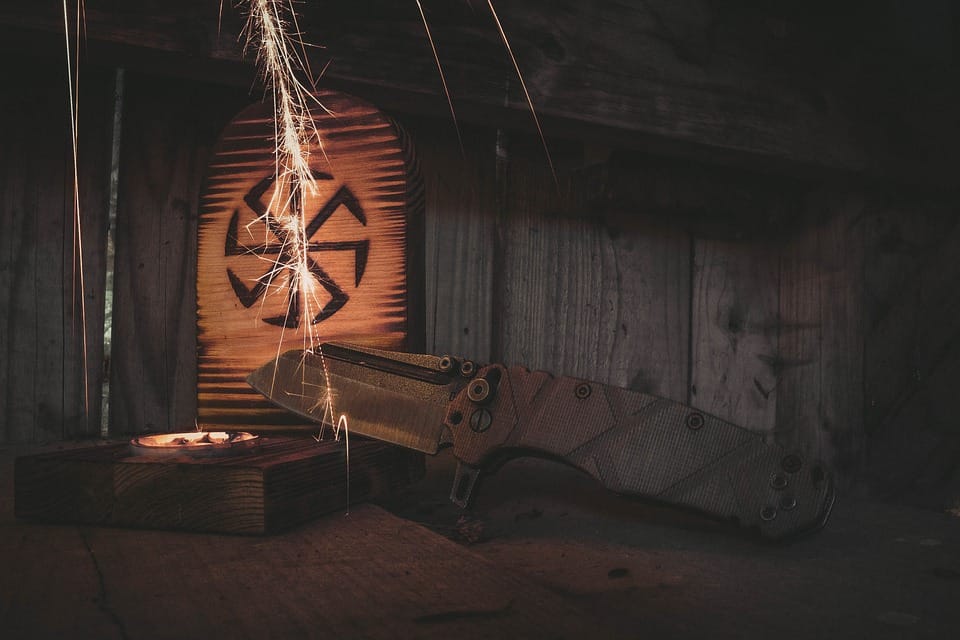The Pocket Ulu: A Revival of a Traditional Inuit Blade
For centuries, the Inuit people have thrived in the harsh, icy landscapes of the Arctic. Their traditional tools, such as the ulu, have played a vital role in their daily lives. The ulu, a curved blade attached to a wooden or bone handle, was used for various tasks like cutting and scraping animal hides, as well as preparing food. However, with the onset of modernization, the traditional art of knifemaking in the Arctic has been declining. In this article, we’ll delve into the world of the pocket ulu, a revival of a traditional Inuit blade.
The Origins of the Ulu
The ulu has its roots in the early Arctic settlements of the Inuit people. The earliest known ulu dates back to the 10th century, during the Dorset culture. The design and construction of the ulu have undergone significant changes over the years, reflecting the ingenuity and resourcefulness of the Inuit people. The ulu was a versatile tool, used for various tasks, from hunting and butchering animals to preparing food and clothing.
Design and Construction of the Ulu
The traditional ulu is typically made from a single piece of steel, with a curved blade attached to a handle. The blade is often decorated with intricate carvings, reflecting the craftsmanship and artistry of the maker. The handle is usually made from wood, bone, or antler, providing a comfortable grip for the user. The ulu’s design allows for precise control, making it an effective tool for tasks that require delicacy and precision.
Modern Revival of the Ulu
In recent years, there has been a growing interest in traditional Inuit crafts, including the ulu. Many modern knife makers are drawn to the ulu’s unique design and functionality. With the resurgence of interest in DIY and handmade crafts, the ulu has become a popular choice for knife enthusiasts and outdoor enthusiasts.
Advantages of the Ulu
So, what makes the ulu an attractive choice for modern users? Here are some advantages of the ulu:
Ergonomics and Control
The ulu’s curved blade provides excellent ergonomics, allowing for precise control and leverage. The handle design ensures a comfortable grip, reducing fatigue during extended use.
Versatility
The ulu is a versatile tool, suitable for various tasks, from processing meat to cutting kindling. Its curved blade makes it ideal for intricate work, such as cutting around bones or trimming animal hides.
Durability
The ulu’s design has stood the test of time, with some traditional ulu remaining functional for generations. With proper maintenance, a modern ulu can also last for a long time.
FAQs
What is the origin of the ulu?
The ulu has its roots in the early Arctic settlements of the Inuit people, dating back to the 10th century.
What is the purpose of the ulu?
The ulu is a versatile tool, used for various tasks, such as hunting, butchering, and preparing food, as well as crafting clothing and tools.
How is the ulu made?
Traditionally, the ulu is made from a single piece of steel, with a curved blade attached to a handle made from wood, bone, or antler.
Is the ulu suitable for modern use?
Yes, the ulu is an excellent choice for modern users. Its unique design provides excellent ergonomics and control, making it suitable for a range of tasks, from outdoor activities to everyday use.
Conclusion
The ulu is a true symbol of the Inuit people’s resourcefulness and ingenuity. This traditional blade has been revived, and its unique design and functionality make it an attractive choice for modern users. Whether you’re an outdoor enthusiast or simply looking for a unique tool, the pocket ulu is an excellent option. By embracing traditional crafts, we can preserve the cultural heritage of the Inuit people, while also benefit from the functionality and beauty of the ulu.
References
- "The Inuit: A Description of Their Habits, Food, and Social Life" by Ipiutaq Ziegler (2007)
- "Knives and Blades" by James R. Wegener (2008)
- "The Ulu: A Traditional Inuit Hunting Tool" by the Greenland National Museum (2015)
Table 1: Ulu Dimensions and Materials
| Blade Size | Material | Handle | Weight |
|---|---|---|---|
| 20-25 cm | High-carbon steel | Walnut | 200-250 g |
| 25-30 cm | Damascus steel | Bone | 250-300 g |
| 30-35 cm | Carbon steel | Antler | 300-350 g |
Table 2: Ulu Care and Maintenance
| Task | Description | Frequency |
|---|---|---|
| Cleaning | Regular cleaning with water and soap | Daily |
| Sharpening | Sharpening with a whetstone or steel | Weekly |
| Oil application | Application of oil to prevent rust | Monthly |
Note: The above content is a basic framework for the article. It’s essential to expand on each section, incorporating more details, examples, and information to make it comprehensive and engaging. The article should be carefully proofread and edited to eliminate any grammatical errors or awkward phrasing.
